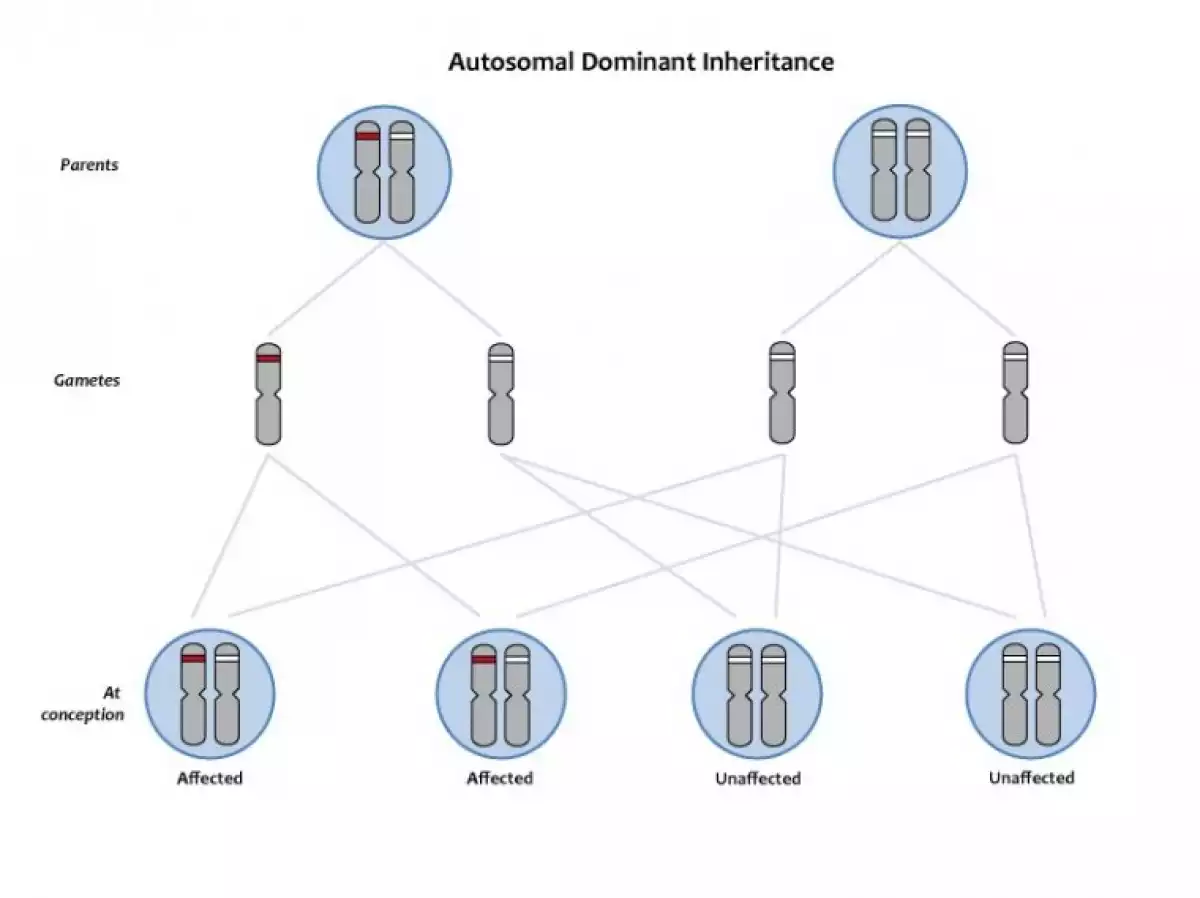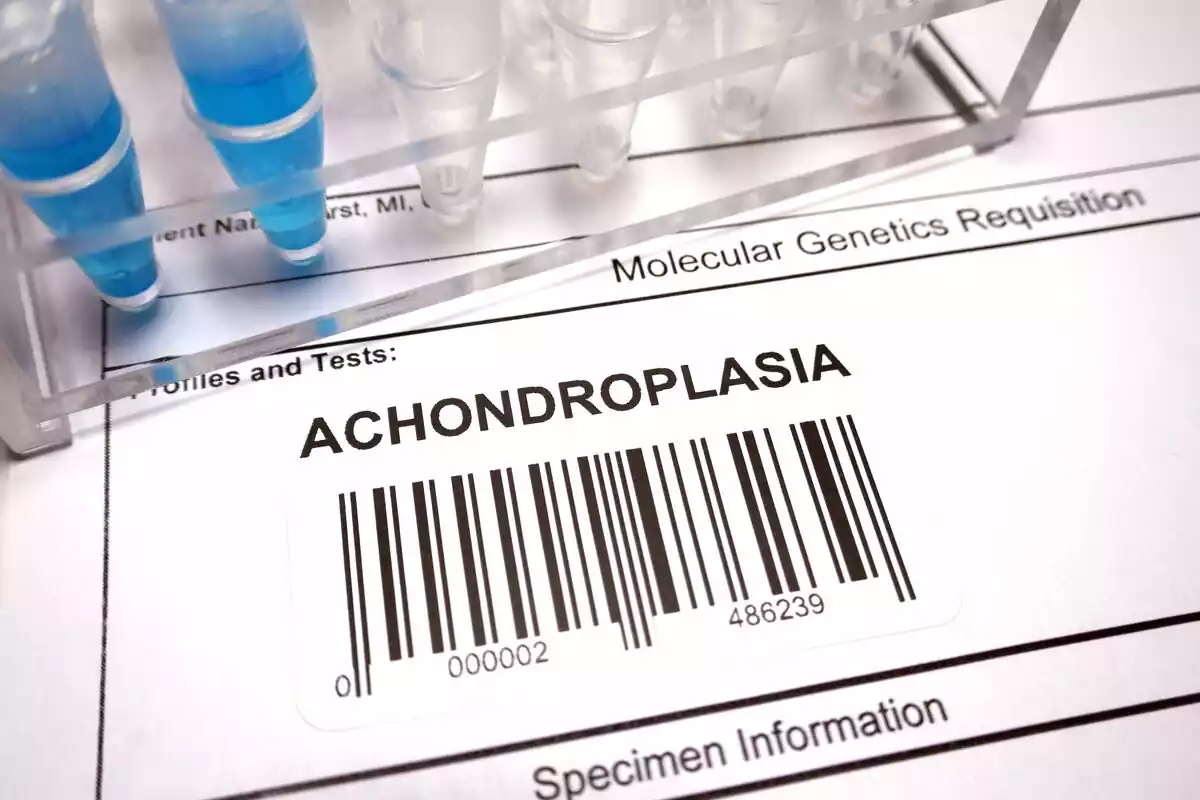Achondroplasia is the most common type of dwarfism and it affects about 1 in 25,000 people. One of the most famous people with achondroplasia is Peter Dinklage, Game of Thrones’s Tyrion Lannister actor.
The most common cause of this syndrome is a genetic mutation, although it can also be inherited in an autosomal dominant manner. The following article will explain what achondroplasia is and its phenotypic characteristics, as well as define a genetic mutation and an autosomal dominant inheritance.
Achondroplasia: The most common type of dwarfism
The word “achondroplasia” means “without cartilage formation”, it is also known as AC, and is the most common cause of dwarfism. Therefore, it is characterized by a disproportionate short stature.
That is to say, its features involve an average-sized trunk and short limbs as compared to the size of the head. This abnormally large size of the head is medically known as macrocephaly.
Other phenotypic characteristics of achondroplasia are a depressed nasal bridge, prominent forehead and sometimes a trident hand.
As an impaired formation of cartilage, achondroplasia is considered a type of chondrodystrophy, which affects the development of the endochondral ossification, a process of bone formation that needs cartilage, especially the tubular bones, some parts of the vertebrae and bones at the base of the skull. For this reason, it is considered one of the musculoskeletal disorders.
Chondrodystrophy should not be confused with chondromalacia patellae, since the latter is caused by the softening of the cartilage in the knee joints. Athletes and dancers are usually the ones to suffer from this, but not necessarily people with achondroplasia.
Although human beings have suffered from this condition since ancient times, this type of dwarfism was described in detail in 1990, once it was found what caused it: a genetic mutation located on the short arm of chromosome 4.
Peter Dinklage: An actor with achondroplasia
Peter Dinklage was born in Morristown on 11 June 1969 (he is currently 49 years old). Apart from being a great actor, he is also known for being one of the most famous characters with achondroplasia.
Dinklage has appeared in films such as, The Chronicles of Narnia, The Station Agent and X-Men: Days of Future Past; although he is probably best known for his role as Tyrion Lannister in the series Game of Thrones.
This role has earned him several awards, a Golden Globe and an Emmy Award among others. He is married to Erica Schmidt and has two children. Regarding his achondroplasia, the actor has stated that over time he has learnt to hold other people accountable for the discrimination they may exert.
Apart from Peter Dinklage, there are many actors and actresses with achondroplasia (and other types of dwarfism) who have played important roles in television and cinema.
Likewise, outside the big screen, people with achondroplasia can lead normal lives. In order to defend this right and reduce stigma and discrimination, many of them have created different foundations around the world.
Thanks to the information provided by some of these organisations, as well as to scientific literature, we are going to explain what achondroplasia is, its causes and other types of dwarfism.

Causes
Achondroplasia may be caused by two main factors. The most common one is a random genetic mutation, that is, a variation produced in the sequence of a specific gene, which happens spontaneously during the interaction of the parental germ cells.
The other cause is the autosomal dominant inheritance, which refers to the probability of transmitting in a hereditary manner the gene that produces this type of chondrodystrophy. Next, we will explain the characteristics of each of these causes.
Genetic mutation
As it was mentioned, a genetic mutation is an alteration in the sequence of a specific gene. It usually happens randomly and due to unclear causes, but it always involves the interaction of the germ cells of both parents.
Achondroplasia is considered a monogenetic condition, in other words, it is caused by modifications in a single gene. Although it can be hereditary, 80% of the cases are caused by the mutation of the gene located on chromosome 4 (there is no need for one or both parents to have this condition).
This gene has a mutation at nucleotide 113 of a protein essential for bone development. This protein is called the fibroblast growth factor receptor 3 (FGFR3).
This receptor has to initiate the process of cartilage cells development, especially in the bone growth plate (the one producing bone tissue, which altogether makes the bones grow in length).
Therefore, the genetic mutations of the FGFR3 lead to a decrease of the cartilage cells development, which in the end affects the bone growth.
Likewise, studies have shown that the genetic mutation may occur because the gene is found in an unstable region of the DNA. Besides, it is said that achondroplasia is caused by autosomal dominant inheritance, but what does this mean?
Autosomal dominant inheritance
In biology, the word “dominance” refers to the superiority of a gene or a hereditary trait over another. Likewise, the word “autosome” is used to name all the chromosomes that are not a sex chromosome, that is, the first 22 pairs.
Every autosome has an “autosomal inheritance”, in other words, a specific transmission of their traits or features that are passed on by parents.
Therefore, the term “autosomal dominant inheritance” refers to the genetic information passed on in a superior manner to a specific chromosome (one which is not related to sex determination).
There are many physical or medical conditions that are inherited through autosomal dominance, and one of them is achondroplasia. If the baby inherits the gene from one of their parents, there is a 50% chance of developing the same condition, which increases a 25% if they inherit it from both parents.
Although, as it has been said, most of the cases are caused by spontaneous genetic mutations, without the need for any of the parents to pass on the gene.
Diagnosis
Achondroplasia can be detected during pregnancy by clinical observation and radiographic evaluation. Some of the main symptoms are contracted base of skull, rhizomelic shortening of the long bones, trident hands, the condition of the proximal femur and the distal femoral epiphysis, which due to achondroplasia has a chevron shape.
Moreover, a test by molecular analysis of the FGFR3 gene can be used to differentiate achondroplasia from other types of dwarfism or other genetic disorders.
Health problems
Since this is not a disease but a physical condition, achondroplasia does not follow any particular treatment. Nevertheless, there are some specific health and physical needs that should be taken into account.
For example, you should take precautions due to the disproportion of the skeleton, the spinal cord compression and other related conditions, such as thoracolumbar kyphosis (thoracic spine curvature). In these cases, it is advisable to maintain an appropriate weight control.
It is also important to monitor the cranial and neurological development to prevent high-risk conditions related to macrocephaly, especially during the first years of life. It has been detected an increase in the morbidity and mortality of children with achondroplasia due to neurological complications that were not treated in time.
Likewise, hypotonia (low muscle tone) tends to improve over time, so children with achondroplasia are able to develop all motor skills. People with this condition may also have sleep apnea, due to the depressed nasal bridge, and in some cases, hearing loss, due to blockage in the middle ear.
Psychological development
Achondroplasia does not affect in any way the psychological or cognitive development. However, there may be some psychosocial problems related to self-concept and discrimination in different situations. In these cases, a special follow-up care is recommended.
For more information on health supervision recommended for every stage of development (from birth to adult life), check out the following article, “Health Supervision for Children With Achondroplasia”, by Tracy L. Trotter, Judith G. Hall and the Committee on Genetics.

Other types of dwarfism
Apart from achondroplasia, there are other types of dwarfism. Among the main ones, there are hypochondroplasia and thanatophoric dysplasia. Achondroplasia differs from the latter in some aspects, such as the dwarf height, caused by the mutation in the FGFR3 gene, and also the predisposition to develop related diseases.
Hypochondroplasia
It is a congenital condition that, like achondroplasia, has phenotypic characteristics, such as short stature, short limbs and macrocephaly. Unlike achondroplasia, hypochondroplasia can go undetected until adolescence.
Since skeletal disproportion tends to be mild, it is called “hypochondroplasia”, as “hypo” means “reduced”. It includes features such as leg bowing and predisposition to alterations of the spine.
Thanatophoric dysplasia
It is a type of dwarfism that is also caused by genetic mutation and is characterized by alterations in the development of the skeleton. This type of dwarfism implies more serious health problems than the previous ones. It affects different bones of the thorax, skull and limbs. Thanatophoric dysplasia may be lethal in some cases, so it is important to perform early diagnosis and treatment.
- This article about "Achondroplasia" was originally published in Spanish in Viviendo La Salud
References:
Baena, R. (2009). Motherhood and disability: living with achondroplasia. Cuadernos de Bioética, XX: 557-567.
Cialzeta, D. (s/a). Acondroplasia: una mirada desde la clínica pediátrica. Revista del Hospital Niños Buenos Aires, 51(231): 16-22.
Del Pino, M. (2013). Referencias de Índice de masa corporal para niños con acondroplasia. Medicina Infantil, XX: 80-84.
Fundación ALPE (2008). Un nuevo horizonte. Guía de la acondroplasia. Retrieved January 25, 2019. Available at http://riberdis.cedd.net/bitstream/handle/11181/2987/Un_nuevo_horizonte_guia_acondroplasia.pdf?sequence=1&rd=0031391190086566
Garde, M.L. (s/a). La acondroplasia en la historia. Una aproximación historiográfica. Retrieved January 25, 2019. Available at https://www.fundacionalpe.org/images/alpe/library/societyEN/La-acondroplasia-en-la-historia-Garde-E.pdf
Medina, J., Espínola de Canata, M., González, G. y Sostoa, G. (2008). Achondroplasia (AC) and its Neurological Complications: a Case Report. Pediatr. (Asunción), 35(1): 24-28.
